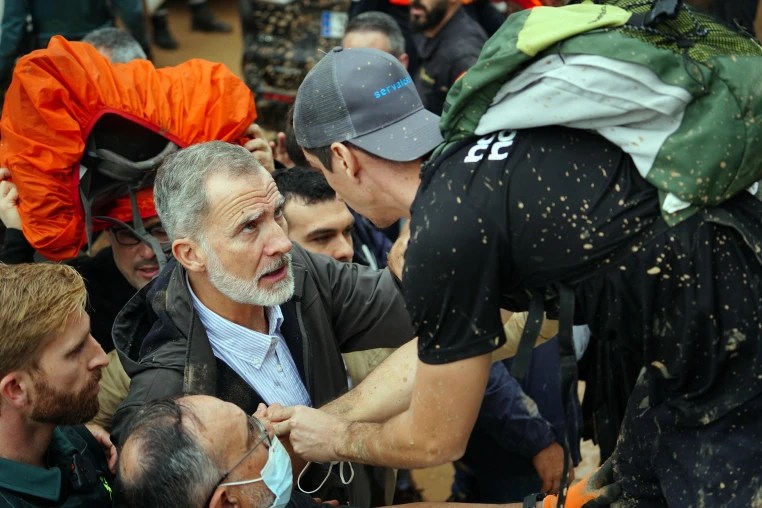Tina Muir knows that making a lasting difference in the battle against climate change is a marathon, not a sprint. Now, she is taking another step in that battle at one of the world’s premier races.
The former British elite marathon runner from Great Britain will participate in the New York City Marathon on Sunday, Nov. 5. Instead of wearing her country’s name across her chest like she has at other competitions, she will be sporting waste around her waist in the name of sustainability.
Muir partnered with fashion designer Natalia Trevino Amaro to create an "upcycled" skirt made out of wrappers and bottles that she will wear while running across the Big Apple. She will also be writing climate-change statistics on her body with the hopes of getting other runners and spectators to think.
“These are the items that we use often, but also they are items that are colorful and eye-catching, and it's something that can provoke a conversation,” Muir exclusively told NBC.
Get top local stories in Southern California delivered to you every morning. Sign up for NBC LA's News Headlines newsletter.
Muir was first drawn to sustainability after watching “FernGully: The Last Rainforest” as a kid. Her passion for the topic only grew as she became a mother.
“It was recently after I had my two children and just being out in the world and seeing the effects through my own eyes as a runner,” she said. “I got to the point where I was thinking about it a lot and I felt I had to use my platform to say something, because surely if I was feeling these things, then other people would be, too.”
Muir retired at 28 years old in 2017 during the self-proclaimed “peak” of her career. She explained that she hadn’t had a period in nine years and said her body wasn’t functioning properly.
Changing Climate
In-depth coverage of our changing climate and environmental issues
Instead of leaving the sport entirely, Muir remained committed to sharing other runners’ stories. She launched the “Running for Real” podcast, a show that began with just interviews but evolved into a larger platform for the running community that examines all parts of the industry.
“‘Running for Real’ is now continuously morphing, but we are this global community that cares about our community as runners, but also as a community as a whole,” she said. “We want to use our running to be better people or be the best people that we can be.”
Muir flipped the page to a new chapter in August with the release of “Becoming A Sustainable Runner: A Guide to Running for Life, Community, and Planet,” which she co-authored with Zoë Rom.
“Those three areas of people, community and planet are three things that I've always been very passionate about,” she said. “And we wanted to weave them together and pull them in to show people that one builds off the other, but each of them need the other two parts to be functioning as they should be.”
Muir recognizes that other runners are not as eager to talk about sustainability issues in running, let alone embrace them.
Waste diversion stations are designed to help runners get rid of plastic water bottles, wrappers, food scraps and more during events. However, in the midst of a race, competitors aren’t focused on bringing that waste to its designated spot.
One of Muir’s roles is getting the thousands of racers to pay attention to an event’s sustainability initiatives before they get off the starting line, that way they don’t have to think about it during their runs. She is keen on getting buy-in from the “average” person, and in her mind, that starts with simple conversations.
“I think environmental activists have a very important role in our space, but most promote a message that for the average person is overwhelming and too much and will make them kind of back away and say, ‘I can't deal with this,’” she said. “But one thing we can all do, even though it's uncomfortable, is talk about it. …
“Even if they seem small, even if they have minimal impact on actual emissions, by having these conversations, the politicians are going to listen, the companies are going to listen, those who have the opportunity to make big change happen. We'll only start doing so if we continue to talk about it.”
Muir will take her mission global in 2025 when she heads sustainability efforts at the World Athletics Road Running Championships in San Diego. Soon after, another global sporting event will descend upon California with another chance to make a sustainability stand.
“The Olympics absolutely has a huge opportunity to make the most of sustainability, to put it as a priority,” Muir said of the 2028 Summer Games in Los Angeles. “The world will be watching.”
There’s a long way to go between Sunday’s New York City Marathon and the 2028 Olympics, of course. Muir’s sustainability efforts will continue in the meantime, and just like a marathon, each step will bring her a little closer to the finish line.
“Ultimately, we should all be using our platforms to find ways to connect with our audiences and remind them that their voice matters,” she said. “Because at the end of the day, it may feel like we are just one in a million, but you know, an ocean is made up of droplets. We all add up together to make that difference.”



